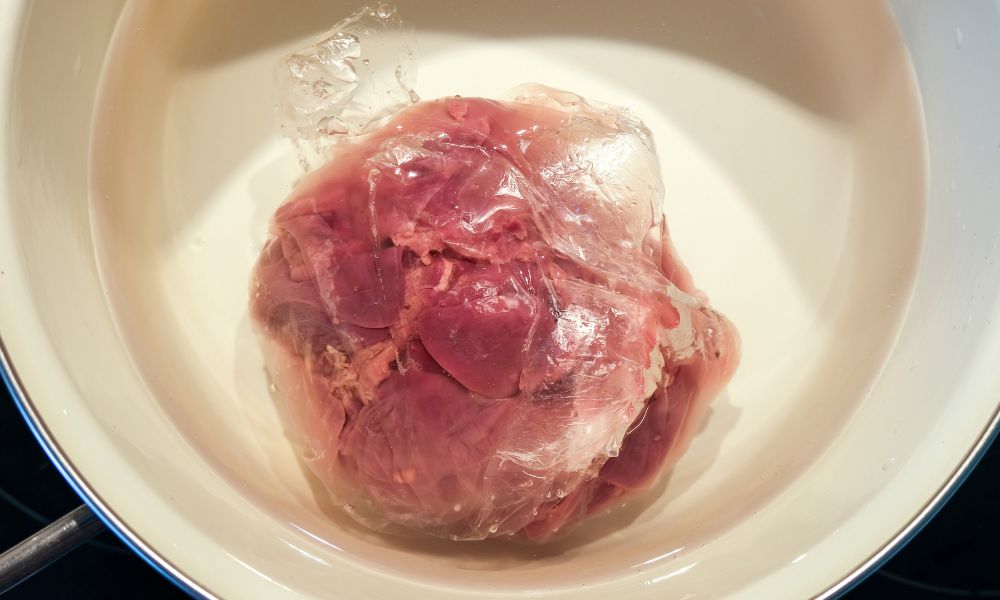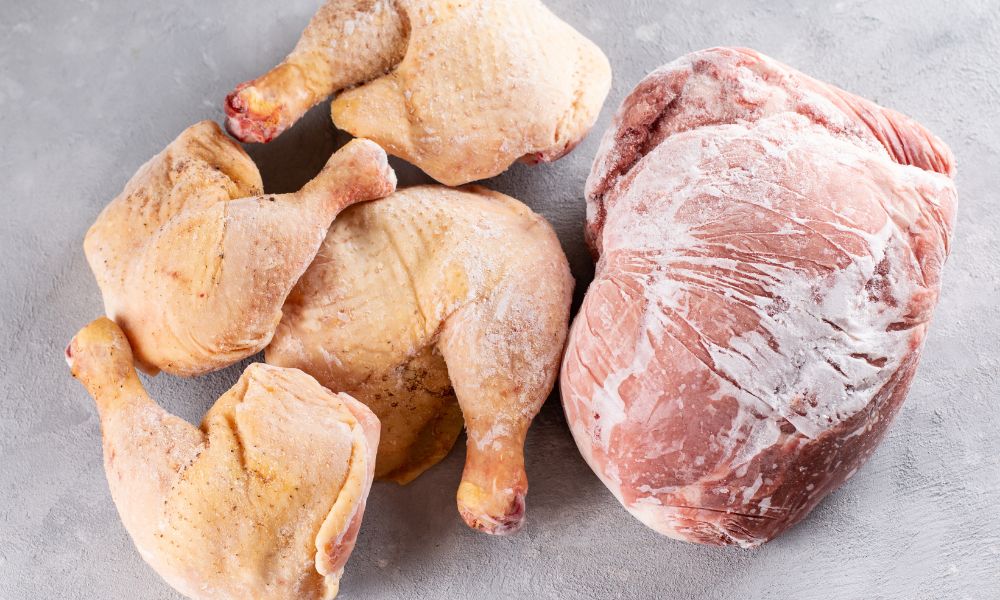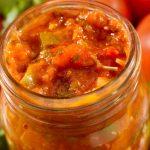In today’s fast-paced world, frozen meat has become a staple in most households, helping busy home cooks save time while still enjoying delicious meals. However, defrosting frozen meat can be a tricky process, with potential pitfalls that could turn your culinary masterpiece into a kitchen disaster. Learning to safely and efficiently defrost your meat is crucial for both food safety and to enhance the flavor and texture of your meal.
In this comprehensive guide, we’ll explore types of frozen meat and their defrosting needs, traditional vs modern thawing methods, crucial safety guidelines to follow, and choosing the right method based on context.

Understanding Frozen Meat and Its Defrosting Needs
When meat is frozen, the water molecules within its cells form ice crystals, which can cause the cell walls to rupture. As the meat thaws, these ruptured cells release water, often leading to a loss of juiciness and a change in texture. It’s essential to defrost frozen meat properly to minimize this damage and ensure it retains its original flavor and texture.
Aside from quality concerns, correct thawing is also a matter of food safety. Bacteria thrive in the temperature “danger zone” of 40°F to 140°F, making the thawing process a risky time for bacterial growth. Therefore, safe defrosting methods are crucial in maintaining the highest standard of food hygiene and protecting you and your family’s health.
Traditional Ways of Defrosting Frozen Meat

There are several traditional ways to defrost frozen meat, including refrigerator thawing, cold water thawing, and microwave thawing. Each method has pros and cons, and understanding which to use will help you unlock your culinary potential.
Refrigerator Thawing: The Safest Method
Refrigerator thawing is widely considered the safest method to defrost meat, as the temperature remains below the danger zone (40°F) throughout the process. To thaw your meat in the refrigerator:
- Remove the meat from its packaging and place it on a plate or tray to catch any liquid released during thawing.
- Put the plate or tray into the refrigerator, allowing enough space around it for air to circulate.
- For every pound of meat, allow at least 24 hours of thawing time in the refrigerator.
While this method is the safest, it requires planning ahead as it can take a long time. Nonetheless, using the refrigerator allows you to thaw different types of meat, including beef, chicken, pork, and fish, without compromising taste.
Cold Water Thawing: Quicker, But Requires Attention
Cold water thawing is another common method that can be faster than refrigerator thawing, but it requires more attention. To thaw your meat in cold water, follow these steps:
- Place your meat in a leak-proof plastic bag.
- Fill a large bowl or sink with cold water and submerge the bagged meat.
- Change the water every 30 minutes to maintain a consistent temperature.
It’s essential to strictly follow the 30-minute water-changing interval, as stagnant water could enter the danger zone temperature where bacteria flourish.
Microwave Thawing: Fastest, But Can Compromise Quality
Microwave thawing is the quickest defrosting method, but it comes with potential downsides. Microwaves can heat the meat unevenly, partially cooking some areas while others remain frozen. This can compromise the quality of the meat and reduce your meal’s overall taste and texture.
To thaw meat in the microwave:
- Remove the meat from packaging and place it on a microwave-safe plate.
- Use the microwave’s defrost setting, following the manufacturer’s guidelines for weight and defrost times.
- Cook the meat immediately after thawing to minimize bacterial growth.
With these traditional methods in mind, let’s dive into some modern solutions designed to make defrosting a breeze.
The preparation of good food is merely another expression of art, one of the joys of civilized living…
– Dione Lucas
Quick Defrost: Modern Solutions to the Thawing Problem
In our busy lives, we’re always looking for quick and easy ways to defrost frozen meat. Thankfully, there are innovative tools and methods that can speed up the defrosting process without compromising on safety or quality.
Defrosting Trays: A Sleek, Time-Saving Solution
Defrosting trays have surged in popularity in recent years, offering a simple, hands-off way to thaw your meat quickly. Made from conductive metals like aluminum, these trays work by transferring heat from the air into the frozen meat, allowing it to defrost more rapidly. To use a defrosting tray:
- Remove the meat from its packaging and place it on the tray.
- Leave the meat at room temperature for significantly less time than traditional methods like refrigerator thawing (approximately half).
- Cook the meat immediately after thawing to ensure optimal food safety.
Sous Vide: Thaw and Cook Simultaneously
A growing trend among cooking enthusiasts, the sous vide method allows you to defrost and cook your meat simultaneously. The method involves sealing the meat in a plastic bag and submerging it into a water bath set to a precise temperature, allowing the meat to thaw and cook evenly all the way through.
- Seal your frozen meat in a vacuum-sealed bag, making sure to remove as much air as possible.
- Preheat your sous vide immersion circulator to the desired cooking temperature.
- Submerge the bagged meat into the water bath and set the timer, allowing additional cooking time for the thawing process.
- When the timer is up, remove the meat from the bag and finish it off with a quick sear on the stovetop for an irresistibly juicy, perfectly cooked meal.
There you have it, an overview of traditional and modern methods for safely defrosting frozen meat without loss of quality. In the next part of this article, we’ll explore crucial guidelines for safe defrosting, choosing the right method based on context, and offer advice on making practical choices. Stay tuned!
Safe Defrosting: Crucial Guidelines to Follow

Defrosting meat safely is paramount to avoid foodborne illnesses and ensure a delectable meal. Keeping these essential pointers in mind will help you prevent the growth of harmful bacteria during the thawing process.
Never Thaw Meat at Room Temperature
One crucial rule is to never thaw meat at room temperature. This exposes the outer layers of the meat to the danger zone temperature (40°F to 140°F), allowing bacteria to multiply rapidly. Always choose a technique that controls the temperature during defrosting, such as those mentioned earlier in this article.
Safely Handle Defrosted Meat
After defrosting, it’s important to handle the meat with care and observe proper food safety practices, such as washing your hands, cleaning utensils, and using separate chopping boards for raw meats and vegetables. When it comes to cooking, follow recommended cooking times and temperatures to kill any lingering bacteria and reach the perfect level of doneness.
Refreezing Defrosted Meat: Safe or Not?
There may be instances where you want to refreeze defrosted meat. It’s generally safe to refreeze meat that has been thawed in the refrigerator or with the cold water method, as long as it has not been left at room temperature for more than two hours. However, refrozen meat may lose quality due to additional moisture loss, so it’s best to consume meat shortly after the initial thaw.
[su_box title=”Most People Don’t know” style=”default” box_color=”#DC1182″ title_color=”#FFFFFF” radius=”3″]Thawing vs. Marinating: If you plan to marinate meat, it’s best to defrost it first. Frozen meat does not absorb marinade well.[/su_box]
Choosing the Right Defrost Method: It’s All About Context
The right defrost method depends on various factors, such as the type of meat, its intended use, and the available time and tools.

Type of Meat and Intended Use
The type of meat you’re dealing with—whether poultry, red meat, or fish—will influence the best defrosting method. For example, fish can become overcooked and mushy if not handled delicately, so refrigerator thawing is your best bet. On the other hand, thawing red meat in cold water or a defrosting tray works well for a medium-rare steak served al fresco.
The dish you plan to cook also plays a role. For a slow-cooker beef stew, you may opt for refrigerator thawing, while a last-minute stir-fry could benefit from using a defrosting tray or the sous vide method.
Practical Choices Based on Time, Tools, and Meal Preparation
Practicality should influence your defrosting method choice. If time permits, refrigerator thawing is ideal for food safety, quality, and taste. However, when pressed for time, using the cold water or microwave method offers quick thawing without sacrificing safety. If you have access to a defrosting tray or sous vide machine, these modern solutions are perfect for an even quicker yet uniformly safe and efficient thaw.
Conclusion
Defrosting frozen meat safely and efficiently is essential to unlock your culinary potential and create mouthwatering dishes. By understanding the differences between traditional and modern thawing methods and following essential food safety guidelines, you can enjoy delicious meals without compromising your health.
Unlock the benefits of expert tips for defrosting meat to perfection and enhance your kitchen skills. Keep exploring other related topics, such as choosing the best home meat slicer to elevate your cooking skills even further. Bon appétit!
References
- https://www.foodsafety.gov/food-safety-charts/food-safety-during-power-outage
- https://www.fsis.usda.gov/food-safety/safe-food-handling-and-preparation/meat/thawing
- https://www.healthline.com/nutrition/sous-vide-cooking#what-it-is
- https://www.thespruceeats.com/how-to-defrost-meat-4687246
- https://www.eatwell101.com/20-kitchen-tips-to-defrost-meat-safely








